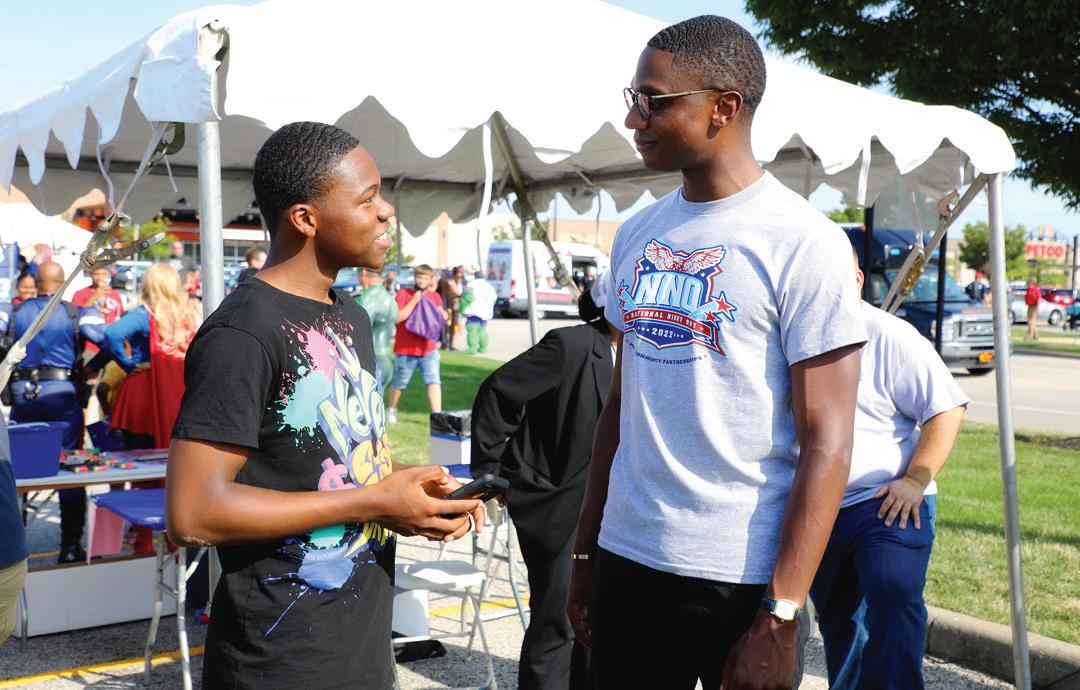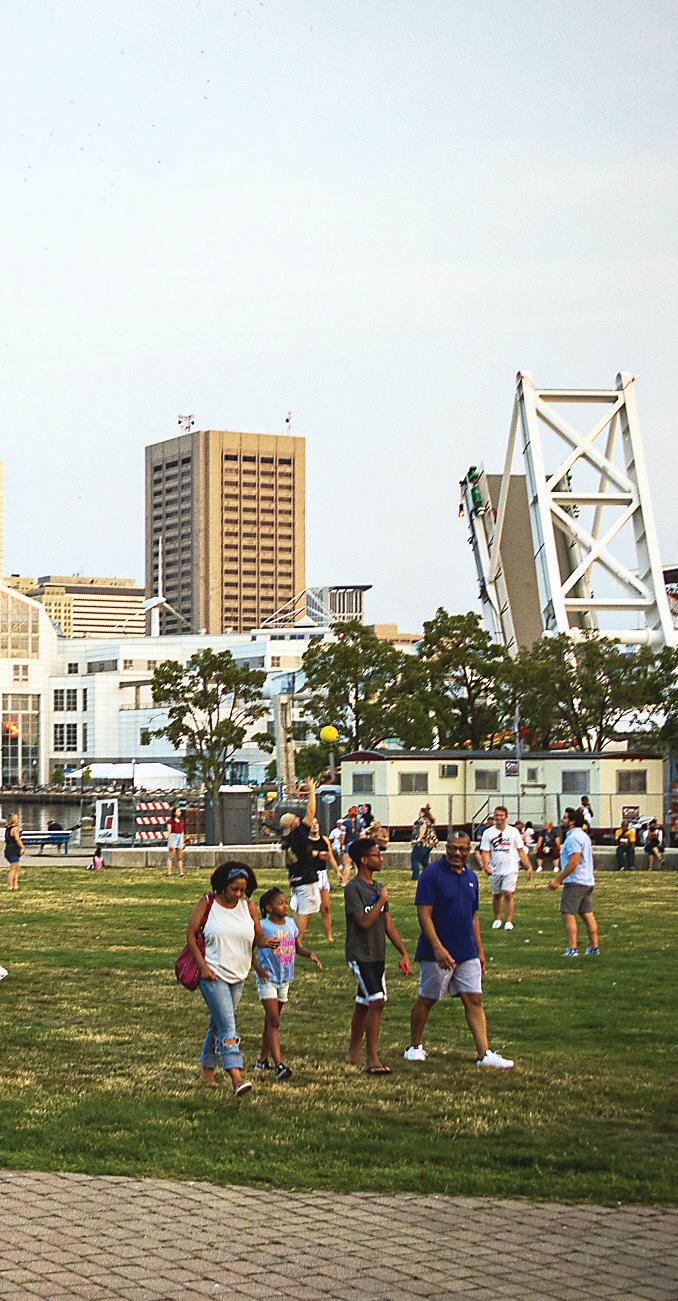
3 minute read
The City’s Alive!
Areimagined riverfront, ambitious lakefront development and infrastructure to connect the city’s core and shores is a palpable plan already in play, steered by a collaborative city administration and public-private investments.
Eyes are on Cleveland — and there’s real buy-in, says Cleveland Mayor Justin Bibb. As one initiative, a master plan was revealed for the Cuyahoga riverfront in partnership with Bedrock and well-known architect David Adjaye.
By Kristen Hampshire
The city selected James Corner Field Operations — which designed Public Square’s renovation — to lead a broad-based master plan for the Downtown lakefront.
“I see new neighborhoods arising in Cleveland where you can live, work and play year-round,” Bibb says, adding that the “real actionable momentum” in the city’s center is garnering attention from all levels of government, along with public and private enterprise.
“The Biden administration is excited about our vision for the waterfront,” Bibb relates. “I had a very interesting conversation with Secretary Blinken, who said, ‘Mayor, your city just screams infrastructure, infrastructure, infrastructure,’ in terms of our waterfront.”
Connecting the Core to the Shores
“We are committed to real action on the riverfront and the lakefront,” Bibb says. And though discussions related to Burke Lakefront Airport and coastline development have been ongoing — for 106 years, actually — the difference is, now the city has “an unparalleled spirit of collaboration.”
Already, a series of community conversations centered on the North Coast Connector land bridge have been in play. And Bibb will announce the results of a traffic feasibility study that started in 2021 to gather data on existing conditions, along with collecting and reviewing community members’ ideas to help shape the outcome. “This will help us realize the North Coast Connector project in the short-term,” he says.
The project will bridge the lakefront to the city’s core.
“At the end of the day, having access to our waterfront is about equity, improving the urban experience and placemaking in an intentional way,” Bibb says, relating that development momentum also will attract new investments to Cleveland.

The comprehensive Cuyahoga Riverfront master plan is a 15- to 20-year vision reimagining 35 acres of riverfront, transforming Tower City Center and unleashing 3.5 million square feet of new development and adaptive reuse projects. Those will include 2,000 residential units, 850,000 square feet of office space, parking, public space and opportunities for hospital, retail and entertainment venues.
And in April, Bibb announced legislation to create a Waterfront Development Authority — a public-private partnership to raise capital with a sole focus on Lake Erie’s waterfront, including Burke Lakefront Airport.


“We are in the early stages of really thinking differently about what that asset can be,” Bibb says, noting the city completed an operational study and is embarking on an economic impact study that will better identify opportunities.


Meanwhile, near-term investments include a $3.5 million plan to replace the jersey barriers in Public Square with more than 60 new bollards that will make the square safer, more aesthetically pleasing and easier for pedestrians to navigate.
Also, the city will replace coin-operated parking meters with smart meters by
Flowbird with a payment service platform by ParkMobile. That way drivers can pay by app, text or by scanning a QR code.
“These investments fit my vision of changing Cleveland from a central business district to a community district,” Bibb relates. “It’s a community now with 20,000 residents, and we need to make sure the amenities are there so we can attract and retain companies and new talent.”
Improving Safety with Economic Opportunity
There are 24.52 square miles — the equivalent of 506 First Energy Stadium sized lots — equaling about 17,000 parcels of city-owned land that could create up to 23,000 jobs in the urban core. This insight from a Sorenson Impact Center study measures the opportunity in neighborhoods like Union-Miles and Lee-Harvard on Cleveland’s southeast side.

“My administration is continuing to focus on community safety and preventing violent crime,” Bibb explains. “But to do that, we have to make sure young people have productive things to do so they have pathways to opportunity. The prerequisite to safety is jobs and economic development.”
Historically, the southeast neighborhoods have been neglected or overlooked for investment. “The amazing thing about Union-Miles and Lee-Harvard is they are resilient and have amazing assets to build, and the possibilities are limitless in terms of what they can become,” Bibb says. “They are a real bedrock of the Black middle class. Think about the amazing faith-based institutions in Cleveland. Many of them are on the southeast side.”
“More jobs will lower violent crime and create a new destination neighborhoods of choice,” Bibb says.
He identifies demand for jobs in the health care and smart manufacturing sectors. The city invested $10 million from the American Rescue Plan for workforce initiatives. It will announce a major investment of ready-to-go sites for companies that want to grow and create jobs in the urban core.
Overall, Bibb says, “There is renewed attention to Cleveland being a mecca for development and a prime place as a leading mid-sized city in the country.”










